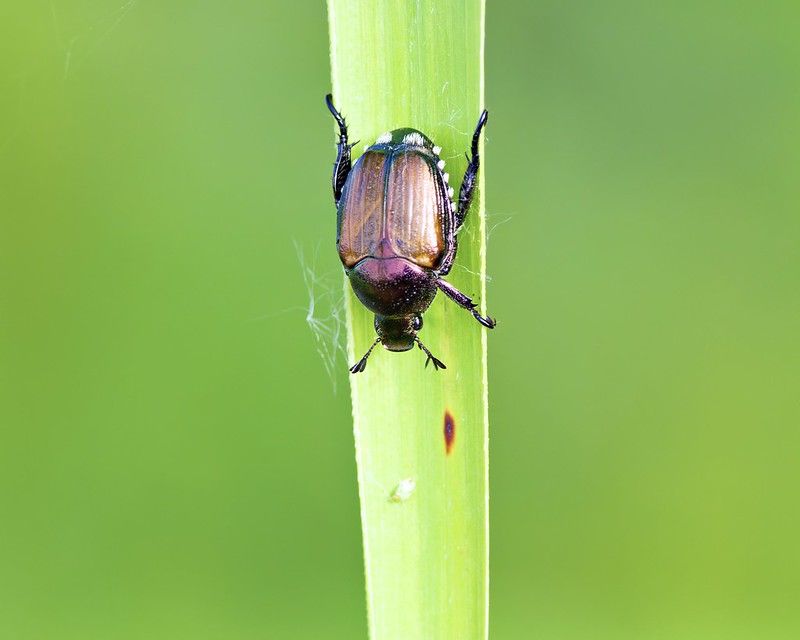On a calm, early morning at Sequoyah National Wildlife Refuge in Oklahoma, I had the opportunity to photograph a Japanese beetle (Popillia japonica) up close. The still air allowed me to approach without disturbing it, capturing the beetle in sharp detail as it clung to a slender blade of grass.

Recognizing the Japanese Beetle
Japanese beetles are easy to identify thanks to their stunning iridescent coloring. Their coppery wings and metallic green thorax catch the light, making them one of the more eye-catching beetles in North America. However, their beauty hides a more damaging reality.
An Invasive Threat
Originally from Japan, these beetles were accidentally introduced to the United States in the early 1900s. Since then, they have spread rapidly and now pose a serious threat to gardens, crops, and native plants. Japanese beetles feed on the foliage, flowers, and fruit of over 300 different plant species.
The beetles skeletonize leaves, leaving behind only the veins. This feeding damage not only weakens plants but can lead to long-term health decline, especially when infestations are heavy.
Observing Without Interfering
What struck me most during this encounter was how little the beetle reacted to my presence. Mornings like this, with cool temperatures and gentle light, are ideal for photographing insects. Their slower movement gives me time to compose a shot without rushing.
Why These Moments Matter
Even though Japanese beetles are invasive and destructive, observing and photographing them can still be valuable. It reminds me how interconnected ecosystems are and how important it is to stay informed about invasive species.
If you’re out photographing wildlife, take the time to look closely at the small creatures too. You might just capture something beautiful, even if it’s not native.

Oh my Steve sorry I thought the post was from your friend Mia! Sorry about that, “You can call me Al” as the song goes. lol
Steve thanks for showing this Beetle. I have seen signs at the local cemetery where I live that refer to a Japanese Beetle has been spotted in the area. I had no idea what it looked like.